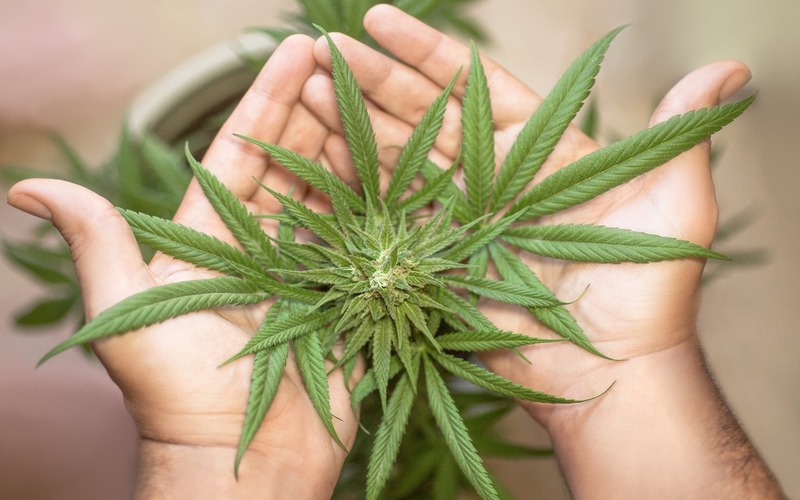From Dennis Peron to Laganja Estranja – the queer group has traditionally been at the forefront of the fight for cannabis legalisation. Figures clearly show that queer men and women have a tendency to take in cannabis at greater charges than their heterosexual counterparts. A person review proposed that homosexual gentlemen and women were being close to four to six situations additional probably to smoke cannabis, with the best premiums of intake getting between bisexual females.
It is no coincidence that modern cannabis intake patterns have played out this way. Even though some could say that this correlation is thanks to a bigger propensity for hazard taking among the the LGBTQ+ group, the actuality is much more nuanced than that.
Historically the overlap concerning hashish customers and homosexual people has produced space for resistance and mutual support. Staying homosexual and consuming cannabis were being equally framed as taboo in the mainstream, specifically in the 1980s – and cannabis played a significant function in the HIV epidemic. The indications and side consequences of prescribed medication were ameliorated by hashish, even though weed was also an vital section of palliative care for AIDS people.
The cannabinoids present in marijuana – in certain THC – quelled nausea, soothed discomfort and stimulated urge for food, consequently greatly improving upon the excellent of life of individuals living with HIV/AIDS.
“I was projectile vomiting. I was in discomfort all the time. I was unwell all the time. I started utilizing cannabis simply because of the medicine [to treat AIDS]. I was using 12 supplements each and every working day and the aspect outcomes ended up killing me,” stated Paul Scott, a veteran who labored as a nurse in Los Angeles healthcare facility AIDS wards in the early 1980s.
He included: “You have to comprehend, we were dying and marijuana was all we experienced. You just cannot feel back again to one with no the other.”
It was the LGBT group that fought for Proposition 215 and the Compassionate Use Act, which at some point paved the way for even further decriminalisation in San Francisco and further than.
We have lots of men and women to thank, such as Mary Jane Rathbun, who afterwards became recognized as “Brownie Mary”. She baked hashish-infused brownies for suffering and dying AIDS patients and shipped them to the healthcare facility wards.
Dennis Peron – a homosexual activist and hashish advocate – opened America’s initially legal medical hashish dispensary in 1996, building him known as the father of the health care cannabis movement. Mary and David later collaborated on a book titled ‘Brownie Mary’s Cannabis Cookbook and Dennis Peron’s Recipe for Social Change’.

The relationship between the two communities persists today. Jay Jackson – who goes by the phase title Laganja Estranja – is a drag queen and hashish activist. She appeared in Ru Paul’s Drag Race Period 6, launching her job into the mainstream.
She instructed leafie that PTSD is a significant factor in why the LGBT+ neighborhood continue to consumes cannabis at larger costs than the rest of the populace: “Growing up, you’re diverse. You are normally ostracised and positioned in a minority team. And cannabis is not only a way to provide you collectively with like minded persons, but it is also a way to actually medically help with all those traumas that you confront as a young adult or youngster.”
Expanding up, you are different… hashish is a way to genuinely medically assist with individuals traumas that you deal with as a younger grownup or boy or girl
Analysis uncovered that about 11% of queer youth who participated in a 2012 study achieved the standards for PTSD – as opposed to 3.9% in the normal population. On top of that, 31% of the LGBTQ+ sample noted suicidal behavior at some level in their existence, in contrast with just 4% of the typical populace. These studies have resulted in increased fees of material abuse in an attempt to self-medicate and self-soothe.
“In normal, queer tradition has a large amount of drug and compound abuse and I feel cannabis can be a excellent harm reduction system,” Ms Jackson extra.
Scientific studies counsel that hashish can assistance individuals dwelling with PTSD. In a study, researchers from the John Hopkins Faculty of Medicine in Chicago and the University of California San Diego monitored two teams of publish-traumatic strain problem sufferers about one particular year. One particular group utilized cannabis to manage signs or symptoms while the other group did not. Indicators had been assessed at the commencing of the study, and each a few months acquiring that the clients who used cannabis were 2.5 moments fewer very likely to have PTSD than those people who didn’t. Rest disturbances – a widespread aspect of PTSD – have been shown to minimize with the use of THC and CBD, despite the fact that more investigation is desired into the will cause of this romance. Similarly, particular cannabinoids have been proven to ease symptoms of stress and worry.
The fight for hashish legalisation has come a long way given that the 1980’s – with Biden pardoning all federal amount very simple cannabis possession costs very last 7 days. But additional get the job done remains to be accomplished – the Previous Prisoner Task (LPP) estimates that more than 30,000 persons are even now incarcerated for cannabis offences, irrespective of it being legal in some form in 37 US states. The struggle is significantly from over.
“It was brown and black men and women who initial introduced hemp to [the US],” points out LPP founder Steve DeAngelo. “And then it was championed by these with HIV, those people that modern society chooses to neglect.
“We will not relaxation and we will not prevent right until the final cannabis prisoner is established cost-free.”




